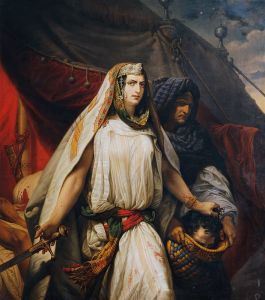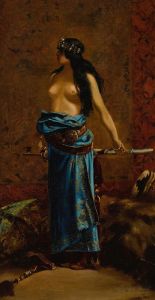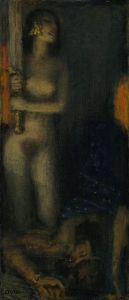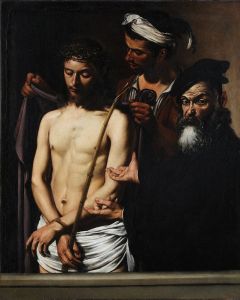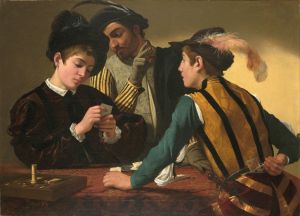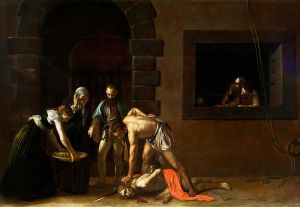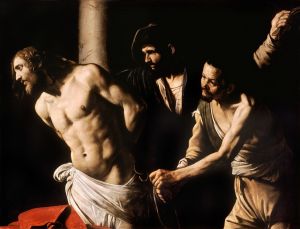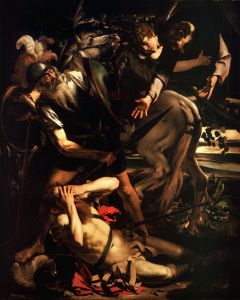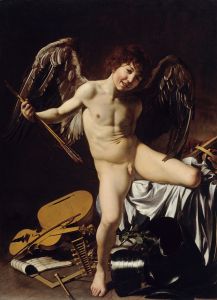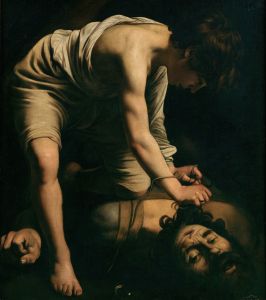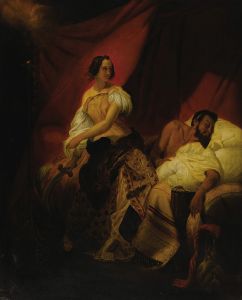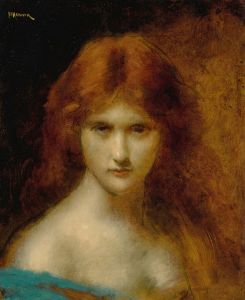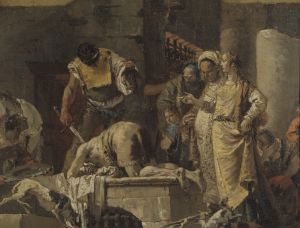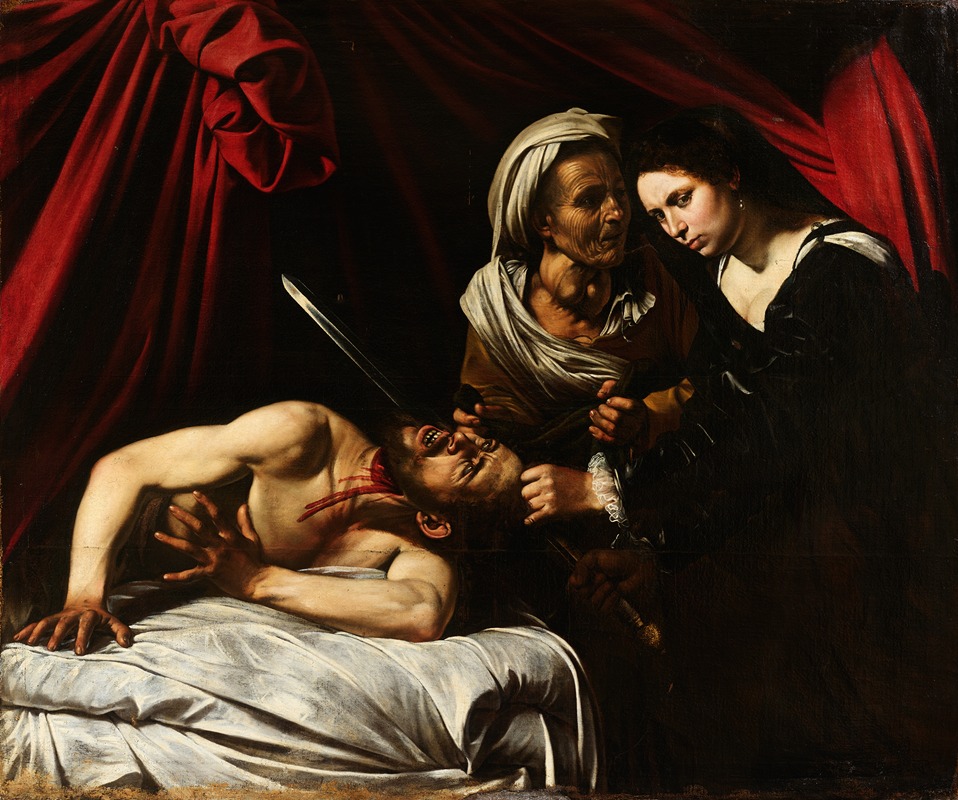
Judith Beheading Holofernes
A hand-painted replica of Caravaggio’s masterpiece Judith Beheading Holofernes, meticulously crafted by professional artists to capture the true essence of the original. Each piece is created with museum-quality canvas and rare mineral pigments, carefully painted by experienced artists with delicate brushstrokes and rich, layered colors to perfectly recreate the texture of the original artwork. Unlike machine-printed reproductions, this hand-painted version brings the painting to life, infused with the artist’s emotions and skill in every stroke. Whether for personal collection or home decoration, it instantly elevates the artistic atmosphere of any space.
Judith Beheading Holofernes is a renowned oil painting created by the Italian Baroque master Michelangelo Merisi da Caravaggio, likely between 1598 and 1599. The work is celebrated for its dramatic intensity, vivid realism, and masterful use of chiaroscuro—a technique that emphasizes the stark contrast between light and dark. It is housed in the Galleria Nazionale d'Arte Antica in Rome, Italy.
The painting depicts a scene from the biblical Book of Judith, an apocryphal text in which the Jewish heroine Judith saves her people by assassinating the Assyrian general Holofernes. In Caravaggio's interpretation, Judith is shown in the act of beheading Holofernes with the assistance of her maidservant. The composition captures the moment of action, with Holofernes struggling in vain as Judith wields a sword to sever his head. The maidservant, an older woman, stands nearby, holding a sack to collect the severed head.
Caravaggio's portrayal of the scene is notable for its unflinching realism and psychological depth. Judith is depicted as a young, determined woman, her expression a mixture of resolve and hesitation. Holofernes, on the other hand, is shown in the throes of death, his face contorted in pain and shock. The maidservant's weathered features and calm demeanor provide a stark contrast to the drama unfolding in the foreground. The use of light and shadow heightens the tension, with the figures illuminated against a dark, almost black background.
The painting reflects Caravaggio's innovative approach to art, which broke away from the idealized forms of the Renaissance and embraced a more naturalistic and emotionally charged style. His focus on the raw humanity of his subjects and his ability to convey intense emotion were groundbreaking at the time and had a profound influence on the development of Baroque art.
Judith Beheading Holofernes is often compared to other artistic interpretations of the same subject, such as those by Artemisia Gentileschi and Donatello. However, Caravaggio's version is distinguished by its visceral immediacy and the artist's characteristic use of chiaroscuro to create a sense of drama and three-dimensionality.
The painting has been the subject of extensive scholarly analysis, particularly regarding its composition, symbolism, and historical context. It is widely regarded as one of Caravaggio's masterpieces and a quintessential example of Baroque art.





